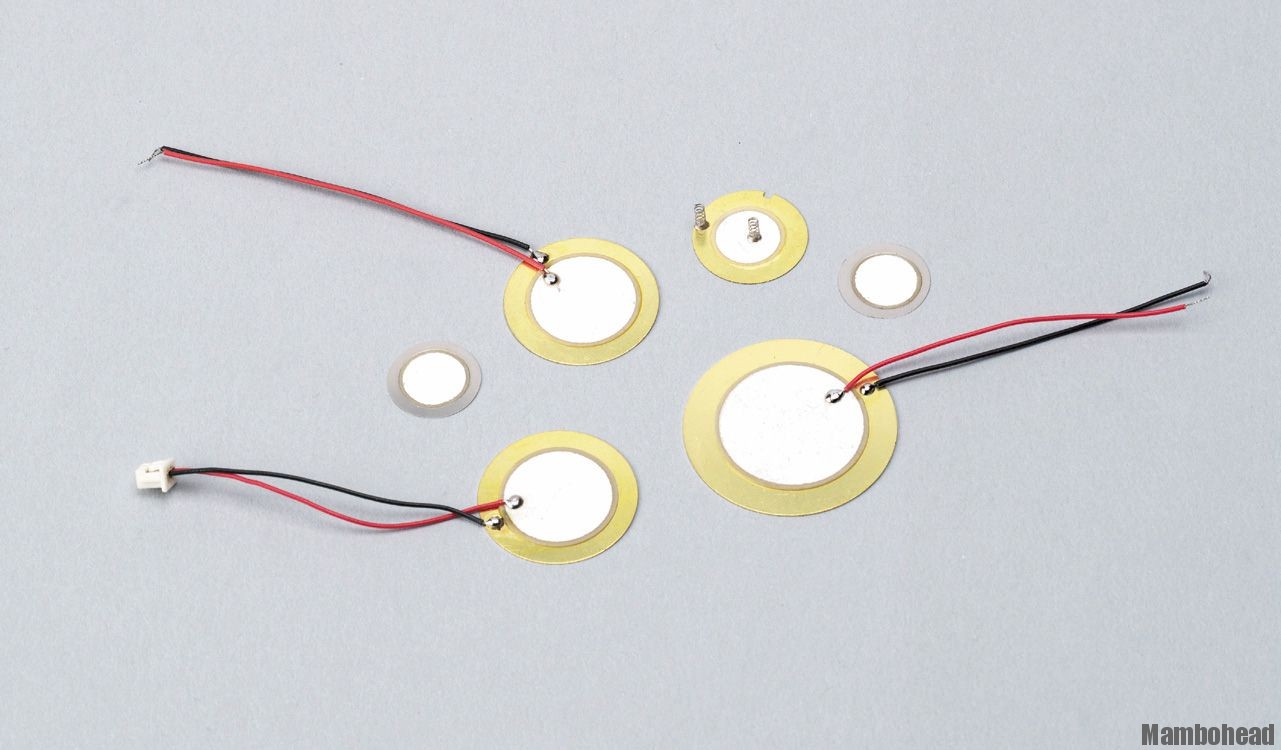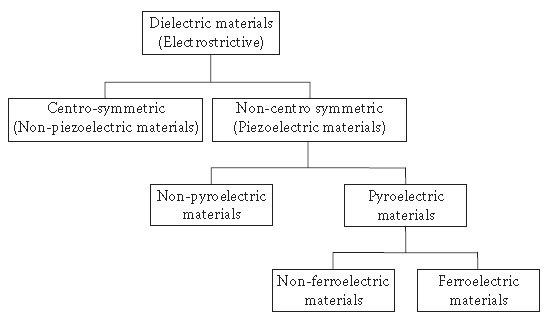

All dielectric materials when subjected to an external electric field undergo change in dimensions. This is due to the displacements of positive and negative charges within the material. A dielectric crystal lattice may be considered to be made up of cations and anions connected by springs (interionic chemical bonds). When an external electric field is applied to the material, the cations get displaced in the direction of the electric field and the anions get displaced in the opposite direction, resulting in net deformation of the material. The change in dimension may be very small or may be quite significant, depending on the crystal class to which the dielectric belongs.
Among the total of 32 crystal classes, 11 are centrosymmetric (i.e., possess a centre of symmetry or inversion centre) and 21 are noncentrosymmetric (do not possess a centre of symmetry).
When a dielectric material possessing a centre of symmetry is subjected to an external electric field, due to the symmetry (inversion centre), the move¬ments of cations and anions are such that the extension and contraction get cancelled between neighbouring springs (chemical bonds) and the net deformation in the crystal is ideally nil. But the chemical bonds are not perfectly harmonic and, due to the anharmonicity of the bonds, there will be second-order effects resulting in a small net deformation of the lattice. The deformation in this case is proportional to the square of the electric field. That is, the deformation is independent of the direction of the applied elec¬tric field. The effect is called electrostrictive effect. The anharmonic effect exists in all dielectrics, and so it can be said that all dielectrics are electrostrictive.
When a dielectric material belonging to a noncentrosymmetric class (except the octahedral class) is subjected to an external electric field, there will be asymmetric movement of the neighbouring ions, resulting in significant deformation of the crystal and the deformation is directly proportional to the applied electric field. These materials exhibit an electrostrictive effect due to the anharmonicity of the bonds, but it is masked by the more significant asymmetric displacement. The materials are called piezoelectric materials. The classification of dielectric materials based on their response to external stimuli is shown in Figure. Each of these groups of materials exhibits certain special characteristics that make them important engineering materials. The materials belong to the class of smart materials because they exhibit inherent transducer characteristics.

Classification of dielectric materials